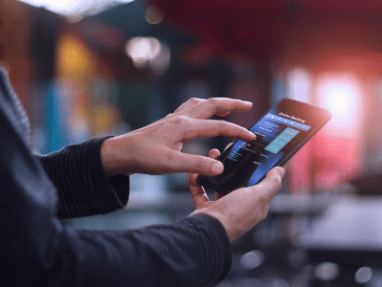Personalization can be the travel industry’s secret weapon in attracting and retaining traveling customers. How many of us remember these moments of surprise and delight when it feels like our needs had been anticipated – and catered for – without our even realizing? In this final blog in our travel series, Aurelio Garcia de Sola, Business Development Director & Start-up Business Lead at The Nest, takes a look at the power and possibility of personalization.
What’s the point of personalization in travel?
Think of personalization as the special sauce that gives travelers the powerful feeling of being seen and valued as individuals. They are feelings that can last a lifetime and turn customers into evangelists for the brand responsible.
These kinds of heightened, personalized interactions create brand loyalty that lasts, and convert travelers into brand advocates who are happy to pay more – for more of those moments. They tell others by being vocal to peers and on social channels in recommending those brands, and are more likely to respond positively to upselling and cross-selling.
Creating those personalized interactions isn’t easy. There isn’t a single silver bullet, instead you need technology and human talent working in close harmony to deliver different levels of personalization, as we’ll see in this blog. But the pay-off can be huge.
Ultimately travel is an emotional purchase made for many different reasons, and as good as your tech stack is, a machine can’t know what a holiday means to a traveler with anything like the perception and empathy of a smart, resourceful human agent.
Which is why in this blog we’ll look at both elements – great humans and great tech – and the role each plays in the mix.
How great technology can help you personalize the customer journey
Smart personalization can be a gamechanger, giving a brand the ability to tailor its interactions with a customer and satisfy that individual’s needs through understanding their behaviors and preferences.
Some of this can be done through technology, present from the consideration phase through to the holiday experience itself and the after-care marketing. And it can happen across every channel, from search to apps, to phone, email and social contact.
Tailored recommendations for every traveler pay off
Ideas for places to go and where to stay, tailored to the individual, will always outperform generic suggestions. This might be via data gleaned from a traveler’s previous trips with a company, or through encouraging them to create a travel profile to collect data on their budget and expectations.
This data can then be used to make recommendations on where to stay and what to do. Those recommendations can be made across digital and social channels like email, text or social feeds, and retargeting campaigns can identify and zero in on those travelers most likely to purchase.
Personalization can help would-be travelers to dream big(ger)
There’s a misconception that personalization only begins after the holiday has been booked, but personalization should start in the consideration stage, what some called ‘the dreaming’ phase of the customer journey.
As much data as possible can be gathered early about travelers before a trip – whether it’s for a honeymoon or a business conference. With the right tech platform in place, all that data can be used to keep track of their preferences, likes, dislikes, and more.
Help them do it themselves
In years gone by the travel agent would be eyeballing their customer in person, able to read their body language and physical cues and using that information to help them sell the customer the holiday of their dreams. These days things are a little different.
Travelers are almost solely online, and whether they’re using price comparison sites or online travel agents (OTA) to ‘DIY’ their own travel agent experience, travel companies have had to adapt. These days it’s user data from online behavior that needs to be used to help travelers curate and create their own package holidays.
Why personalization that really counts needs the human touch
When it comes to the travel itself though, technology can only ever be part of the answer in delighting customers through personalization. For example, a frequent flier who’s a vegetarian should be pretty confident they’re going to get served decent mid-flight meat-free options.
That kind of simple personalization is considered a hygiene factor these days though: broad brush, data-driven personalization at scale that can be done fairly easily with technology. The kind that shows you hotel recommendations or activities based on your profile, or makes sure you’ve got your taxi booked to and from the airport.
But true personalization is more than simply knowing a guest’s name (and how to pronounce it). It’s also anticipating a customer’s needs and understanding their preferences. On a practical level, the real opportunities to delight customers, and create those moments that really last, are far more likely to be found with human-to-human interactions.
Personalization needs the right people, processes and culture
So much of how a brand can make its customers feel, is in how its people conduct those personalized interactions, whether face-to-face or through screens, as well as how relentlessly they pursue any and all opportunities to make a customer’s trip better.
That obsession with brilliant CX is down to hiring great people and enveloping them in equally great company culture. The way you hire – and who you hire – is absolutely key, and ensuring brilliant guest experiences can be a huge brand differentiator.
Whether it’s a hotel chain, airline or OTA, customer-centric processes are needed so that its agents are able and empowered to go that extra mile for their customers. In turn though, it’s the values and culture of a business that fires them up to want to go that added distance.
The people you hire, the processes you put in place, and the culture and values you instill in them will make the difference, whether it’s in the plane cabin or the hotel lobby, the remote call center or the 5-star concierge service. It’s employing people who know – and care about – a great new sushi restaurant that’s just opened that they can recommend, or the best gym to hit at the weekend.
If you’d like to talk more about personalizing for your customers or how it could help your business, get in touch and let’s talk.



